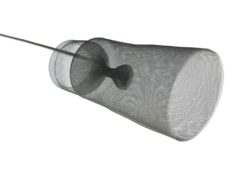
Current US guidelines recommend the use of embolic protection during saphenous vein graft percutaneous coronary intervention (PCI) but, according to a new study, embolic protection is only used in 37.9% of cases with a significant decrease over time. Furthermore, use of embolic protection varies from site to site with a patient having 15.5-fold increased odds of undergoing saphenous graft PCI with embolic protection if they underwent the procedure at a site more likely to use embolic protection than a patient with similar characteristics undergoing the procedure at a site less likely to use embolic protection.
Writing in Circulation: Cardiovascular Interventions, Javier A Valle (Department of Medicine, Division of Cardiology, Rocky Mountain Regional VA Medical Center, Aurora, USA) and others comment that the recommendation to use embolic protection, when technically feasible, during saphenous vein graft PCI is “largely based on data for a distal balloon protection device that is no longer clinically available and an endpoint (cardiac biomarkers) that is no longer routinely assessed post-intervention”. They add that these factors and the technical challenges of embolic protection in this setting “have suggested that embolic protection is used in less than one third of saphenous venous graft PCI”. The aim of the present study was to determine the clinical characteristics and site variation associated with embolic protection use among patients undergoing contemporary vein graft intervention.
Of 7,266 single-vessel saphenous vein graft interventions performed between 2008 and 2017, 37.9% involved the use of an embolic protection device. Both vein graft interventions and the use of embolic protection devices decreased over time. Valle et al report: “The proportion of cases performed with embolic protection was less in the most recent year (29.6%) compared with the first year analysed (35.4%).”
The procedural characteristics associated with decreased embolic protection device use include distal anastomotic lesion location and preprocedural occlusion. However, the site where the intervention was performed was more relevant than patient demographics or clinical characteristics. The authors note: “The same patient could have a >15-fold higher odds of receiving this therapy simply by being treated at an alternative site. This variation has important implications, particularly as the data suggest that this guideline-recommended therapy may provide clinical benefit.”
In the study, use of embolic protection was associated with a 36% reduction in the odds of the composite outcome of periprocedural myocardial infarction or 30-day mortality. Furthermore, the individual outcome of death and unsuccessful intervention were also significantly lower among those treated with embolic protection. However, Valle et al note that the clinical outcomes associated with embolic protection “have been inconsistent across analyses”. They add a meta-analysis did indicate that embolic protection did not provide benefit but, after data from a large observational cohort was removed from the analysis, also suggested embolic protection provided a potential reduction in all-cause mortality and major adverse events.
Study author Stephen Waldo (Department of Medicine, Division of Cardiology, Rocky Mountain Regional VA Medical Center, Aurora, USA) told Cardiovascular News: “The data do suggest decreasing use of embolic protection devices with significant site-level variation, in the context of conflicting observational data evaluating their potential benefits for our patients. Ultimately, another randomised trial evaluating the use of these devices may be necessary to evaluate their potential in contemporary practice and provide additional data to support or refute the current American and European professional society guidelines. In the interim, I personally believe that it is reasonable to continue to use these devices when technical feasible.”













